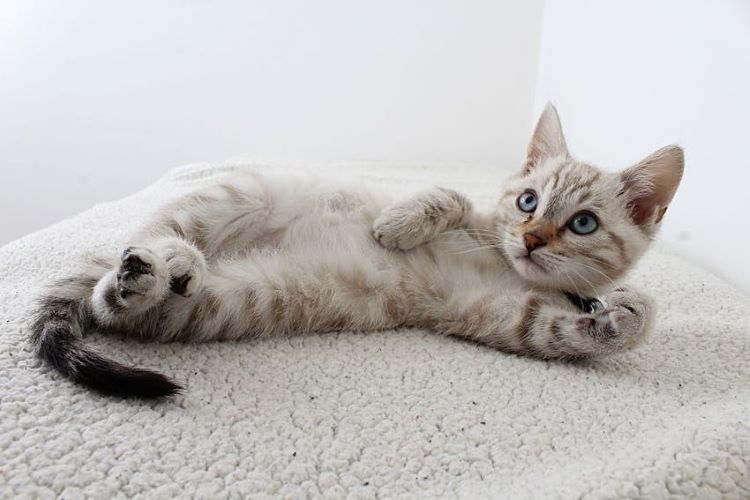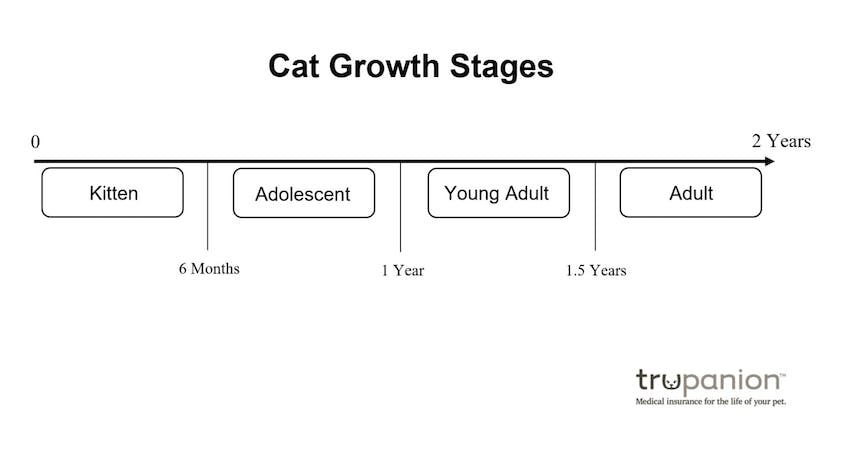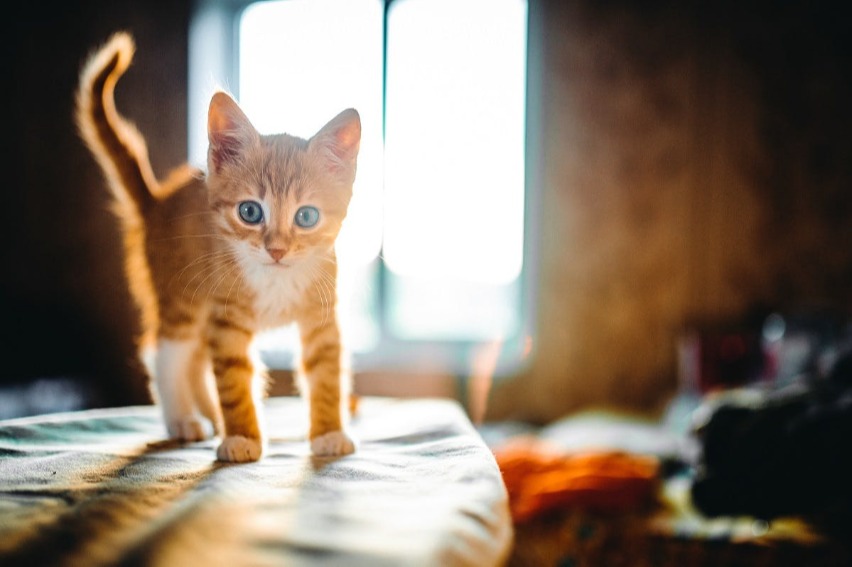Ready to help treat your pet to a healthy life?
When Do Cats Stop Growing? From Kitten to Adult Feline
By : Kelli Rascoe & Trupanion Staff | Updated Mar 14, 2024

At what age do cats stop growing? Whether you’ve recently adopted a new kitten or have a feline friend who just seems to keep getting bigger, it’s normal to wonder when they’ll reach their full adult size. Many of us have expectations for when a cat should stop growing — often based on previous pets — but the actual age this occurs can have many contributing factors.
That’s why we decided to consult with Trupanion veterinarian Dr. Caroline Wilde to learn more about cat growth rates, at what age cats do stop growing, and how to keep kittens healthy as they develop into adult felines.
When do cats reach adulthood?
Your kitten may be tiny now, but they will grow up quickly before you know it. So, at what age do cats stop growing for good? Although things can vary from pet to pet, Wilde says there are typical growth milestones based on the majority of domestic cats, similar to human growth charts for height and weight.
“I would say by 2 years of age a cat’s growth is complete,” she explains. “By nine to ten months, in most cases, a cat is probably as tall as it is going to get, and then they tend to fill out.”
While many pet parents simply view a cat as transitioning from a kitten to adult, there is a “teen” stage in the middle. Typically, this falls between six months to one year of age. See the cat growth chart timeline below for more details.
Cat growth timeline
Wondering when your kitten will become a full adult feline? Let this cat growth chart serve as your guide.

Cat breed and growth rate
As you may have guessed, the breed of kitten you have plays a role in their growth rate and, more notably, how big they eventually become.
“A cat’s genetics and breed is the biggest determinant in a cat’s fully grown size,” says Wilde. “Feeding appropriately will then dictate maintaining an ideal weight.”
This means that if you have cats of different breeds, they may mature at different sizes. In fact, larger breed cats tend to keep on growing well past their smaller counterparts. According to Maine Coon Expert, Maine coons often don’t reach their full-grown sizes until they are between three and five years old.
Kittens that are likely to grow large
If your kitten belongs to any of the breeds below, they are more likely to end up as a larger adult cat. They are also more likely to reach their full-grown size at an older age than their smaller breed counterparts.
- Maine coon
- Ragdoll
- Norwegian forest cat
- Siberian
- British shorthair
How to keep your kitten healthy as they grow up
It’s fun to watch kittens grow up into adult cats (enjoy it—the time goes fast!), but amid all the playtime and cuddles, it’s important to make sure they’re staying healthy. Wilde offers some tips all pet parents can follow to ensure their kittens age healthily and safely into adult felines:
- Find a veterinarian you like, and keep up with routine checkups.
- Feed your kitten good quality food that is specifically rated for kittens (read labels carefully).
- Ensure your kitten is getting plenty of exercise on a daily basis—this will be about one to two hours, usually spread out in short bursts of play throughout the day.
- Follow your veterinarian’s recommendations for spaying or neutering, and know that it can affect growth and weight gain.
- Talk with your veterinarian about when your cat should transition from kitten to adult food.
Wilde also notes that transitioning from kitten to adult cat food typically occurs at 9 to 10 months, but it can vary. It’s important to understand that every cat’s growth and needs are unique. What worked for a previous cat may not be the right choice for your new kitten. It’s a good idea to check with your veterinarian before transitioning your pet to any new diet or trying out new activities.

Is my cat growing properly?
Is your feline friend growing far past your expectations—or not getting anywhere close? It’s worth knowing that there may be some recessive genes at work that can make your cat unusually large or small for their breed. This can simply mean that your cat is actually a mixed breed instead of a pure-bred, but the good news is that lovable, friendly cats come in all shapes, sizes, and backgrounds.
That said, there are also certain illnesses and underlying conditions that can affect your cat’s growth rate, like congenital portosystemic shunts (PSS), hypothyroidism, and intestinal parasites. Even poor nutrition can have a negative effect on your kitten’s ability to grow.
So if you’re concerned about your cat’s growth rate, it’s a good idea to set up an appointment with their veterinarian to rule out anything serious.
Want to learn more about cat development? We created this guide to when kittens calm down just for you.
